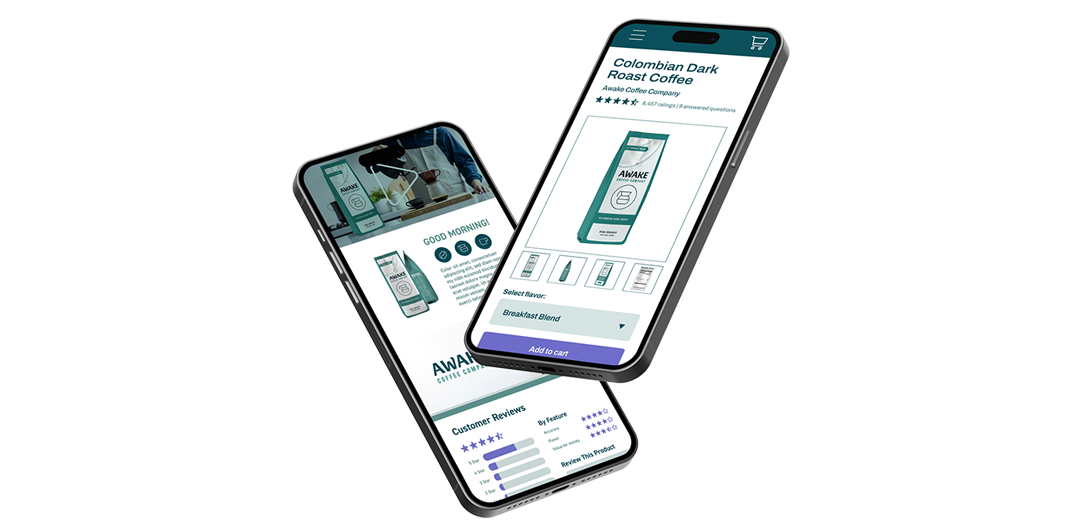Growing your consumer electronics brand begins with effective e-commerce marketing. This article delves into the latest trends in e-commerce marketing and provides practical execution tips that will increase engagement, traffic, and sales. Let’s dive in.
A Growing Market
Consumer electronics is growing at an explosive rate. The market value is up 20 percent from 2020, and projections expect that growth to continue.
Global and domestic shoppers research, compare and buy consumer electronics online. The digital shelf provides users immediate access to device data, specs, reviews and competitors. In this highly competitive –– and lucrative –– market, manufacturers, brands and distributors must optimize their digital shelf presence to see the growth and revenue at their fingertips.
Taking advantage of this exponential market growth requires an intentional e-commerce marketing strategy. Digital shopping begins with consumers conducting research long before they make a purchase decision. Marketers have their work cut out for them.
Below, we explore trends in e-commerce marketing that brands can implement –– and benefit from –– starting now.
Consumer Electronic Trends in E-Commerce Marketing
Reaching the right customer requires a marketing strategy that meets them where they are. And in an omnichannel retail space, you must establish a consistent online presence across multiple channels.
Here are the top trends for consumer electronics in e-commerce marketing.
1. Consumer Electronics Product Bundling
The consumer electronics market is growing, and so is the demand for compatible accessories for these devices. Suggesting relevant, helpful product bundles through your PDPs introduces shoppers to more of your products while enhancing their purchase.
Product bundles and relevant product recommendations can significantly increase cart size, average order value and customer satisfaction. But poor bundling suggestions do the opposite: one in five shoppers will leave a PDP that serves inaccurate or irrelevant recommendations.
Shoppers browse consumer electronics with the assumption that they’ll choose accessories to complement their purchase. Present them with the product bundles and add-ons they’re looking for to make the most of their new product purchase.
2. Higher VR/AR Engagement
Virtual reality (VR) and augmented reality (AR) are prominent in e-commerce marketing. Virtual try-ons and gamified product interactions are commonplace in the digital retail space. A recent survey by 1WorldSync shows that 54 percent of online shoppers say product multimedia (like AR and VR) convinced them to buy a product they didn’t think they needed or wanted.
And though AR and VR applications have proven highly effective in e-commerce marketing efforts, developers and marketers have merely scratched the surface of the technologies’ marketing capabilities. In 2019, Ericsson coined the phrase “Internet of Senses,” signaling a movement toward total immersion in digital sensory experiences.
As higher VR/AR engagement occurs within the digital shelf, developers will continue to innovate sensory experiences that merge reality and support marketing efforts for consumer electronics –– and more.
3. Highlight Sustainability
As consumers focus more on brand values and environmental impact, sustainability has become an essential purchase criterion. The digital shelf allows consumers to be selective with the brands they shop with. And in 2023, you must take every step to secure a competitive advantage, from the product to your packaging.
Recent research found that nearly three-fourths of consumers are open to changing their shopping habits to reduce their environmental impact. Furthermore, 41 percent of respondents say they’re willing to pay higher prices for products that come in sustainable packaging.
Shoppers understand that their dollars are their voice in the retail space. They’re willing to pay more for products and brands that align with their values to cultivate environmental responsibility. Include sustainability practices on your product detail pages. Highlighting sustainability initiatives and protocols is an effective aspect of your e-commerce marketing strategy that will earn the right attention from shoppers ready to buy.
4. Consumers Rely on Multiple PDPs and E-Commerce Sites for Product Information
Your product content experience drives sales –– and customer loyalty.
Online shoppers expect local shopping experiences on a global scale. When a user comes to your site, the interaction should be seamless with other touchpoints from your brand. 1WorldSync research found that 81 percent of consumers expect a brand’s product content experience to be similar everywhere they interact with that brand, with the understanding that consumers are viewing product content across many channels.
The same research found that consumer electronics purchases had consumers researching at least four products (52 percent) and visiting multiple sites (89 percent), with 28 percent visiting four or more sites.
Shoppers rely on multiple PDPs and e-commerce sites to research and understand consumer electronic products before making a significant purchase. Your PDP content empowers shoppers to understand products clearly so they can confidently buy your product.
5. Quality Product Visuals
Product visuals are more important than ever in an increasingly digital commerce space. As you strategize PDP content, your marketing team must understand the importance of quality product visuals.
Product imagery drives e-commerce sales in any industry for every product. But as you create marketing strategies for consumer electronics, your team must understand the pivotal role your visuals and imagery play as you sell through digital channels.
The e-commerce space is perhaps the most competitive retail landscape. You must understand the foundational nature of quality product visuals for your marketing schemes to work.
Your PDPs are the central source of content on an e-commerce site, providing customers with a complete view of your product. Optimizing your PDPs for e-commerce includes prioritizing product visuals.
1WorldSync conducted a 2022 survey in which we asked customers why they leave PDPs and why they click “buy.” The results read like a mirror: 52 percent said poor quality product imagery –– or no images –– caused them to leave a product page. In comparison, 58 percent cited high-quality, well-executed imagery as a principal driver of purchase.
The visuals you choose for your consumer electronic PDPs will drive customers away or encourage them to buy. Your e-commerce strategy must include product visuals that inform consumers, educate them about your product, and engage them as they compare your product with your competition.
E-Commerce Marketing that Sells More
The consumer electronics industry exists in an era of innovation, possibility, and a market home to eager consumers ready to buy. Effective e-commerce marketing ensures your brand and products are positioned before the right consumer at the right time to secure the sale.
At 1WorldSync, we know what it takes to create compelling marketing content that converts. We boast a suite of solutions that help you engage better, sell more, and scale growth. Reach out to our team to learn how we can help you market your consumer electronics on today’s ever-expanding digital shelf.






